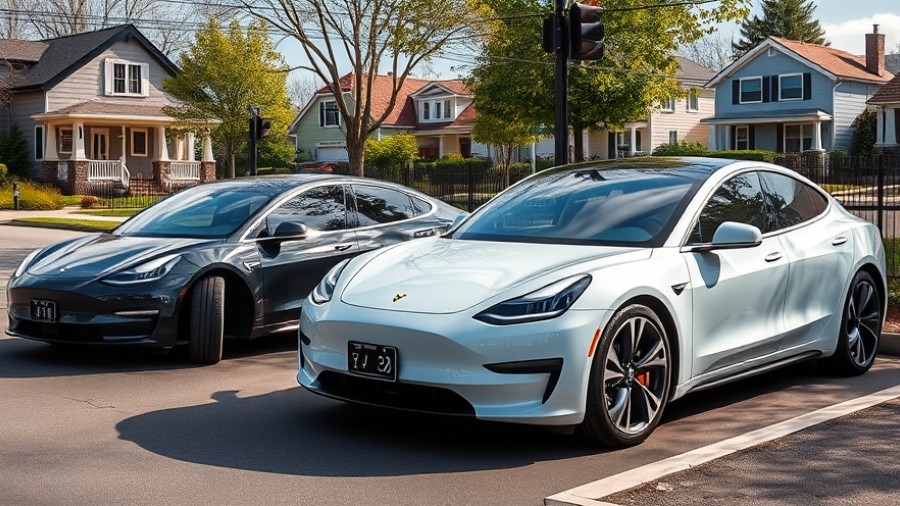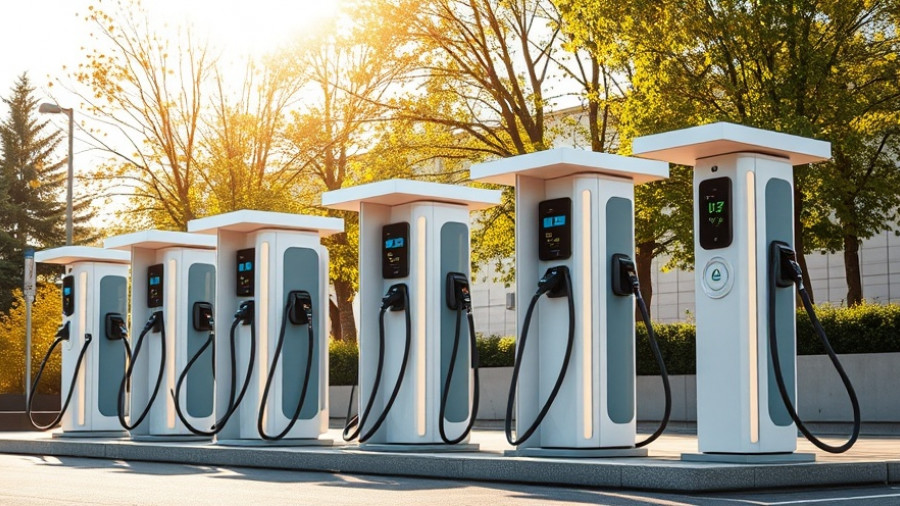
Reviving the Iconic Renault 4: A Blend of Nostalgia and Practicality
The automotive industry is undergoing a significant transformation, with retro designs gaining traction as manufacturers tap into nostalgia while embracing sustainability. The new Renault 4 E-Tech Electric embodies this trend, merging classic charm with modern usability. This model not only pays homage to the original iconic design that captured hearts from 1961 to 1994, but it also introduces a vehicle that meets today's practical needs.
Electric Revolution: The Specs Behind the Charm
The Renault 4 E-Tech Electric features a 52 kWh battery, allowing an impressive range of up to 408 kilometers on a single charge. This capability stands out in a market were electric cars are frequently critiqued for their range limitations. Additionally, it boasts a DC charging capacity of 100 kW, enabling quick charge times, which is a must-have for modern electric vehicle users, especially those relying on home charging stations or public EV chargers integrated with solar energy systems.
Space and Comfort: A True Family Car
When considering an electric vehicle, especially for families or businesses that might be transitioning to green energy solutions, space is of utmost importance. The Renault 4 addresses this with generous interior dimensions; it provides ample boot space and room for passengers, resolving the shortcomings found in its counterpart, the Renault 5. This design ensures that it can comfortably fit a modern lifestyle while still being agile enough for city driving—a balance that today’s eco-conscious consumer seeks.
The Emotional Connection: Bridging Generations
For many, a car is more than just transportation; it is intertwined with personal history and emotional memories. The Renault 4 can evoke nostalgia for those who grew up seeing the original model on the roads, potentially leading to increased interest from older demographics who wish to reconnect with a beloved icon. This connection may also extend to younger generations eager to own a piece of automotive history that aligns with sustainable practices.
Green Living Awareness: Why It Matters Now
With the growing urgency to adopt greener lifestyle choices, the introduction of vehicles like the Renault 4 aligns perfectly with current societal trends toward sustainability. Its ability to run entirely on electric power makes it a fitting choice for homeowners and businesses looking to reduce their carbon footprint while taking advantage of green energy solutions like solar panels. The integration of electric vehicles into daily life signifies a step towards comprehensive energy practices that prioritize eco-friendliness.
Conclusion: The Future of Retro with a Modern Twist
The Renault 4 E-Tech Electric successfully bridges the gap between beloved past designs and advanced technology, making it an accessible choice for those eager to invest in a sustainable future. Its retro aesthetic coupled with practical use, significant range, and charging capabilities makes it an attractive option. As the auto industry shifts towards electric solutions in response to climate change, models like the Renault 4 remind us that the future of driving can be both nostalgic and innovative.
Exploring options for solar installations or EV charging solutions can further enhance the sustainable experience of owning such a vehicle. Consider how the Renault 4 could fit into your lifestyle and the possibilities it opens up for eco-friendly driving.
 Add Row
Add Row  Add
Add 



Write A Comment